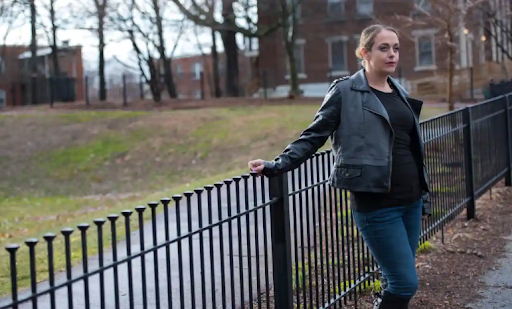"The Trap”: A documentary review of the prison-to-pimp pipeline
In June 2018, The Guardian released The Trap, a documentary about human trafficking and the American prison system. The documentary takes places in Worcester, Massachusetts; Orlando, Florida; Chicago, Illinois; and Texas. It follows three survivors of sex trafficking, one of whom is named Nikki Bell.
Before watching The Trap, I didn’t understand the implications outsiders had on inmates. As a child, I was not exposed to drugs or sexual and domestic violence. I did not hold an understanding of the reality of violence within my community. I grew up within the greater Worcester community, but like many others, I was not aware that human trafficking was occurring.
When human trafficking takes place, a cycle of abuse occurs. When traffickers utilize the prison system to exploit inmates, they begin the cycle by recruiting victims. According to The Guardian, “traffickers are using government websites to obtain personal information including mugshots, release dates and charge sheets to identify potential victims while they are still behind bars.” In many states, anyone can look up information about inmates. Traffickers use these websites like dating apps. They look at the inmate’s photo and profile, and choose which individuals to target. They look at the prisoner's arrest history and bail charge; traffickers also look for women who have histories of drug abuse and prostitution and use this history against the victims.
Once the victims are chosen, traffickers write inmates letters promising them money, love, or a home. They form a relationship with the inmate and put money on their books. If an inmate is up for bail, the trafficker will post bail. Once the woman is released, the traffickers and pimps expect the woman to repay them. Often, traffickers will pull up in a car and newly released inmates will walk out of jail and into the car of a sex trafficker.
In The Trap, one individual described it as a taxi line coming to pick women up from prison. In addition, “Sometimes women are released not knowing who bonded them out or why, or what they’ve gotten into, and now they’re being coerced,” said Diane Checchio, former prosecutor for the district attorney’s office of Orlando, Florida. “They come out of jail and there’s someone waiting saying: ‘I posted your bond – now you owe me’ … [They will] threaten to rescind that bond if the girls don’t do what they’re asked or told to do.”
Because of this, women are cycled out of prison and into the control of traffickers.
A survivor named Kate describes her experience of being groomed and recruited in prison. Kate was recruited by Richard Rawls. He sent her love letters and promised her a home. He also said that she would only have to prostitute if she chose to. When Kate was released, she went with Rawls. She said that she made this choice because she had nowhere else to go.
Traffickers count on women like Kate—women who do not have the resources or a family to back them up. They prey on women who they know can be groomed and easily manipulated. Traffickers also prey on women with past histories because they know they are vulnerable.
Trafficking survivor Nikki Bell states, “predators thrive off isolation and trauma, so prisons and jails are perfect hunting grounds because there you have a captive population of women who often have nowhere to go, and no support when they’re released. Now they have figured out how to work the system, these institutions have become like big fish bowls for traffickers. Incarceration takes vulnerable women and makes them more vulnerable.”
Traffickers have found a way to prey on an extremely vulnerable population. They prey on women with trauma(s), who experience mental illness, and drug or alcohol addiction. They have learned how to use the cycle of abuse to their advantage.
I first heard about Nikki Bell a couple of years ago. At the time, she was an up-and-coming activist who focused on supporting women involved in prostitution and sex trafficking. Nikki, a survivor herself, has formed a non-profit organization called Living in Freedom Together (LIFT). With Nikki’s help, LIFT works to advocate for women involved in trafficking. LIFT also works to provide a safe space, share resources, and educate women on the signs of trafficking.
Recently, Nikki and LIFT opened “Jana’s Place,” a long term recovery home for women affected by sex trafficking, PTSD, and drug and alcohol abuse. It is run and operated by survivors of human trafficking and is the first of its kind in Massachusetts—and possibly in the United States. The community support for this project has been overwhelming, showing how important Nikki’s voice and efforts have been. Having overcome the odds herself, Nikki, LIFT and “Jana’s Place,” like so many of Dressember’s grant partners, are now helping others to survive and to find their own voice.
About the Author
Megan Robbins is a recent college graduate. She received her bachelors degree in social work and she hopes to utilize her skills to serve others. When she is not a social worker, Megan loves to be creative through dancing and painting.





